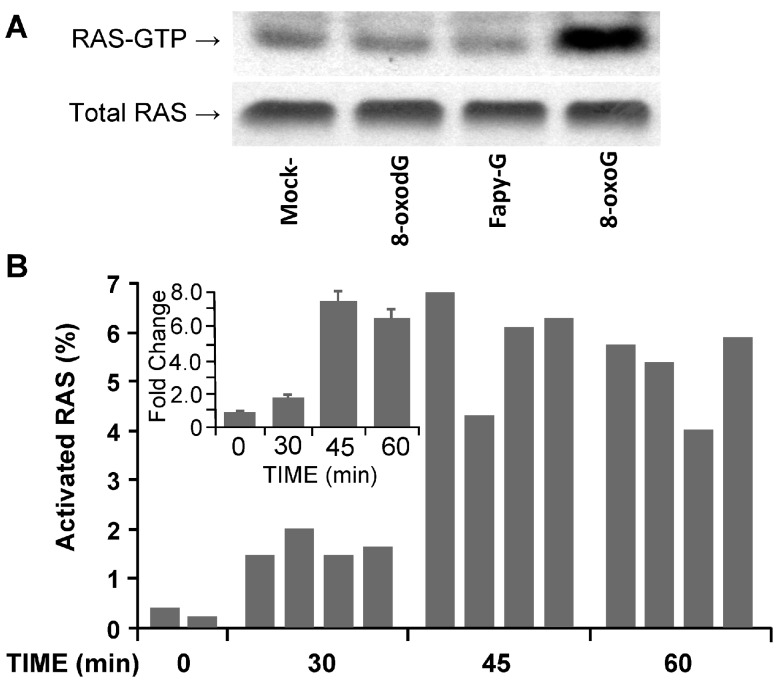Figure 2.
Activation of rat sarcoma–small guanosine triphosphatases (RAS–GTPases) in lungs by 8-oxo-7,8-dihydroguanine (8-oxoG) challenge. (A) Challenge of airways with 8-oxoG, but not 2,6-diamino-4-hydroxy-5-formamidopyrimidine (FapyG) or 7,8-dihydro-8-oxo-2'-deoxyguanosine (8-oxodG) (50 ng per kg) increased the GTP-bound levels of RAS (RAS–GTP) levels. Mice (albino, laboratory-bred strain c; Balb/c) were challenged intranasally (i.n.) for 45 min, and lung extracts then prepared for active RAS pull-down assays, as we previously described [81]. Upper panel: RAS–GTP levels in lung extracts of 3–4 individual mice. RAS–GTP was captured by a RAS pull-down assay from 160 μg of lung extract and immunoblotted using Pan-RAS antibody (Ab). Lower panel: Abundance of total RAS in 20 μg per lane of lung extracts, as shown by pan-RAS Ab. 8-oxoG, 8-oxo-7,8-dihydroguanine; FapyG, 2,6-diamino-4-hydroxy-5-formamido-pyrimi-dine; 8-oxodG, 7,8-dihydro-8-oxo-2'-deoxy-guanosine; (B) Time course of RAS–GTPase activation after 8-oxoG challenge of lungs. Individual mice were challenged with 8-oxoG (50 ng mg per kg, dose is determined in preliminary studies) i.n. and GTP-bound RAS was determined by ELISA pull-down assays [105]. RAS–GTP was captured from 160 μg of lung extract. The percentages of increase were calculated using MS Excel. The abundance of total RAS was determined in 20 μg of lung extract by ELISA pull-down assays. Animal experiments were performed according to the NIH Guide for the Care and Use of Experimental Animals and approved by the UTMB IACUC (no. A0807044).

